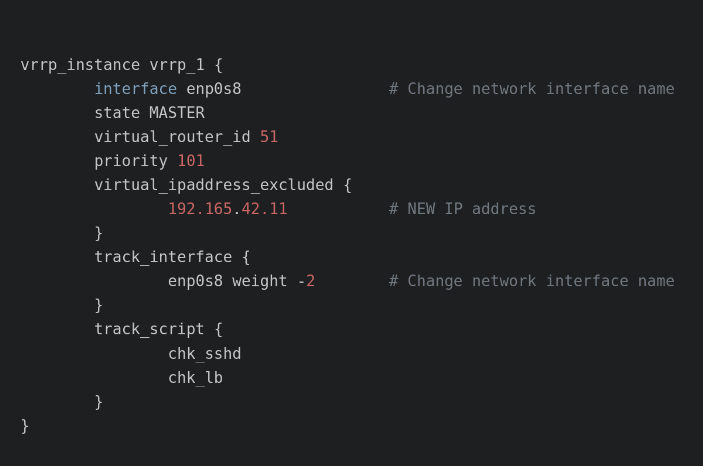Learn how to install and configure the HAProxy VRRP module. Our HAProxy Support team is here to help you with your questions and concerns.
HAProxy VRRP Module- Installation & Configuration
Did you know that HAProxy Enterprise’s VRRP module assigns a virtual, static IP address to the load balancer node?
In case of node failure, the IP address transfers instantly to a backup node. This will prevent any break in service. Our router can send traffic to the load balancer’s IP address. The module uses a stable version of Keepalived to implement the Virtual Router Redundancy Protocol (VRRP).
How does the HAProxy VRRP module work
In the beginning, the active router sends out periodic advertisements to the passive routers, which monitor the running status.
In case the active routers do not advertise after a certain interval, keepalived starts failover. Then, the virtual servers are cleared and a new active router takes control of the virtual IP, begins health checks, and starts sending VRRP advertisements.
HAProxy VRRP Module – Installation and Configuration
- First, install the VRRP module with the system’s package manager on both HAProxy Enterprise nodes participating in the load balancer cluster.
# On Debian/Ubuntu sudo apt-get install hapee-extras-vrrpCopy Code - Then, configure the VRRP instance on the active load balancer node. So, edit the file `/etc/hapee-extras/hapee-vrrp.cfg` with the necessary changes, including the network interface name, virtual IP address, etc as seen here:

- Then, it is time to start the `hapee-extras-vrrp` service:
sudo systemctl start hapee-extras-vrrp sudo systemctl enable hapee-extras-vrrpCopy Code - We can let the server bind to the virtual IP address, by editing the `/etc/sysctl.conf` file and adding the following directive:
net.ipv4.ip_nonlocal_bind=1Copy Code - After making this change, reboot the server.
- Then, adjust the HAProxy Enterprise configuration to use the virtual IP address.
frontend myfrontend mode http bind 192.165.42.11:80 default_backend web_serversCopy Code - Then, ensure that the backup load balancer’s VRRP configuration mirrors the active one. We have to make changes to both the VRRP configuration file and the HAProxy Enterprise configuration.
To add an extra layer of sophistication, a custom bash script can be used for health checks. Here, a script named `check_haproxy` verifies the presence of the HAProxy process every 2 seconds. This script is then integrated into the VRRP configuration:
vrrp_script check_haproxy {
script "pidof haproxy"
interval 2
}Copy CodeFinally, define the load balancer’s VRRP instance with the communication details, election priorities, and a unique virtual router ID for both hosts:
vrrp_instance VI_1 {
interface eth1
state MASTER
priority 255
virtual_router_id 50
}Copy CodeWith the above steps, we will have a robust high availability setup for our HAProxy Enterprise load balancer, ensuring uninterrupted service even in the face of node failures.
[Need assistance with a different issue? Our team is available 24/7.]
Conclusion
In brief, our Support Experts demonstrated how to install and configure the HAProxy VRRP module for uninterrupted service even during node failures.
PREVENT YOUR SERVER FROM CRASHING!
Never again lose customers to poor server speed! Let us help you.
Our server experts will monitor & maintain your server 24/7 so that it remains lightning fast and secure.




0 Comments